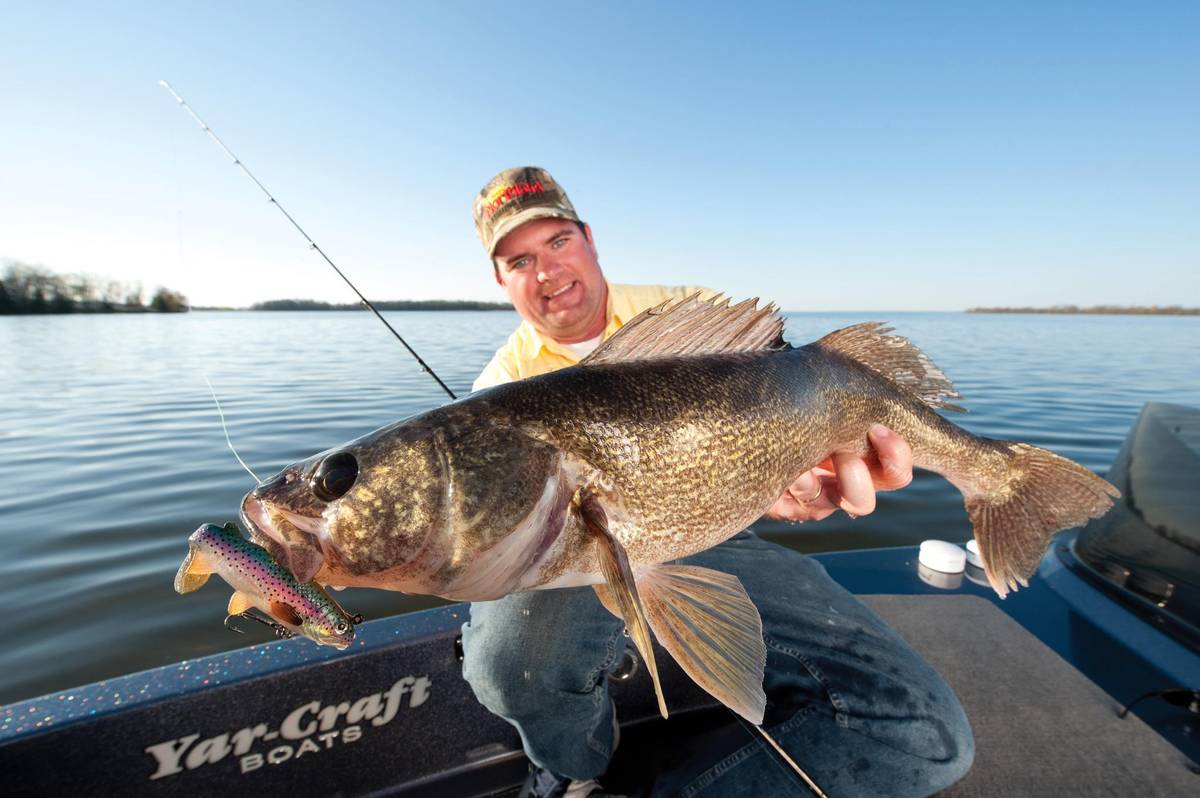Fall patterns run the gamut from shallow to deep. Depending on the body of water, there might be walleyes on shallow rocks or weeds, deep structure, deep rocks, open water or current bottlenecks.
 Sometimes what is old will again become new in that locations, bays and shorelines that held fish early in the season suddenly load up with fish as water temperatures cool. Some of the best fall spots are often just a matter of going back to where you caught fish during the spring or early summer.
Sometimes what is old will again become new in that locations, bays and shorelines that held fish early in the season suddenly load up with fish as water temperatures cool. Some of the best fall spots are often just a matter of going back to where you caught fish during the spring or early summer.
The reality is that there will be different populations of fish on different programs so it is impossible to say that most fish slide out deep in the fall or push up shallow. If only finding fish were that easy. Throw in the seasonal big moves that some fish make as they search out current or position next to bottleneck areas with moving water and the reality is that fall walleyes can be found just about anywhere.
What is a sure thing however is that fish will be moving and change will be a constant. Because fish do move so much in the fall, I have wrote in the past how much I love large community spots late in the year… big locations that intersect the route of many transient fish during the fall when fishing pressure drops off to practically nothing. That is a good recipe for success.
Another good recipe for success is to target smaller lakes that were really good earlier in the year. Now why small lakes versus big lakes? Don’t get me wrong, big lakes often fish really well in the fall and often fish much later into the fall as they take longer to freeze over but there are things I really like about lakes that are less than a couple thousand acres as fall turns ugly.
Small lakes seem to fish better during periods of strong winds. Tough weather is a reality as the open water season comes to a close and too much wind will sometimes make the fishing on big bodies of water much more difficult. Wind pounding hard bottom areas and the fact that water temperatures cool down with each passing front often are good for fishing but everything is better in moderation.
On smaller bodies of water or at least protected bays, you can sometimes fast forward or rewind on the patterns by either looking for protected areas that have avoided the brunt of the fronts and wind or you can look for area that are getting hit. Small lakes are sometimes going to be more controlled than the wide open all or nothing atmosphere of big water.
Not always but often, small lakes start out hot and then get tough as the summer progresses while large lakes often start out slower but then typically offer good fishing through the summer. So often however, we watch these small lakes become really productive again in the fall.
Often as well, cooling water temperatures drive good fishing in that falling water temps only make most patterns better, where as unusually warm trends actually seem to scatter fish. Determining whether the fish are on the scatter routine versus the loading up routine often dictates the strategy…. ie: trolling crank baits covering a lot of water versus fishing vertically on a specific location. As a rule of thumb, pale washed out fish are fish on the run while darker fish are more stable residents of a particular location.
Fall walleye fishing can be some of the best fishing of the season. Classic patterns unfold each season on many bodies of water and there is often very little fishing pressure. Fall fishing however can also be extremely frustrating when fish are not watching the calendar. There can be times when it seems like the fall pattern is no pattern…. fish are scattered everywhere but there isn’t a concentration anywhere.
You can put the odds in your favor this fall by either targeting a smaller or larger lake with some strategy just like you would early in the year. Adjust your strategy and presentation to the fish and not the calendar. Warm trends and scattered fish call for a completely different game plan than cooling temperatures and concentrating fish. Look at the conditions and not the calendar.










